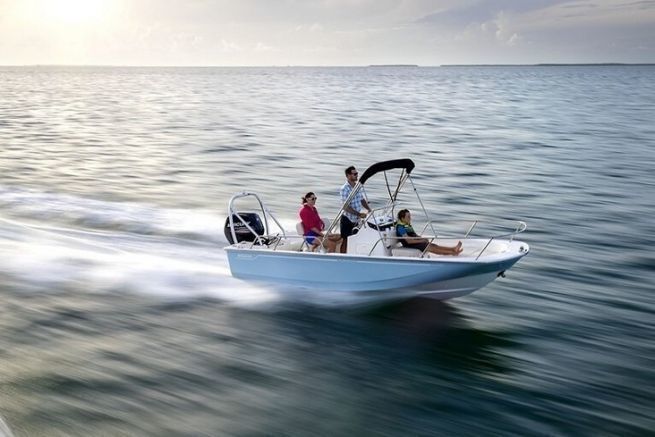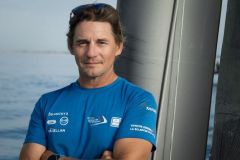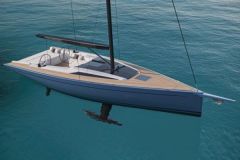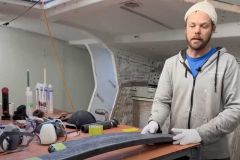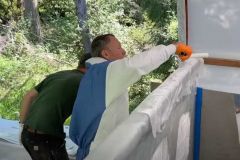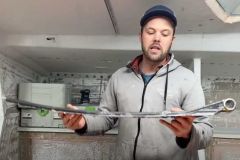Lalou Roucayrol, head of the Lalou Multi ocean racing team, has been working for many years on the evolution of boat manufacturing methods, notably as Arkema's technical partner in resin development.
What's the current state of green boatbuilding?
The majority of pleasure boats are built in composite. This is a fabric (carbon, fiberglass, linen, etc.) coated with resin, which hardens (polymerizes) into a composite material. Today, resin is essentially thermosetting (polyester). The final product is therefore not recyclable.
By opting for a recyclable fabric ‚euros linen, for example, which is produced in the North of France, which further reduces the carbon footprint ‚euros rather than fiberglass, the overall carbon footprint is still more beneficial, but the material is still not recyclable.
Polyester was introduced in the late 1945s. Epoxy was used on prototype racing boats in the 75/80s. In 2022, Arkema developed Elium thermoplastic resin, and other manufacturers are also developing this type of resin.
What are the characteristics of Elium resin?
Arkema has developed an alternative to conventional resin, a thermoplastic resin derived from petroleum, but recyclable without loss of mechanical properties. The raw material (fiber, PET sandwich) can be extracted and the entire composite deconstructed to recover between 95 and 98% of the monomer matrix (PMMA), depending on pollution (which is not recyclable, like gel coat, etc.).
The process involves heating the Elium resin in a pyrolysis oven to temperatures between 400į and 600į. The material is liquefied and becomes monomeric once again. The centrifugal method also separates the different materials by weight.
Arkema is currently working on projects involving biosourced resins. They have developed a prototype composed of 50% biobased materials and 50% from the petroleum industry. Elium resin does not use biosourced materials, but is recyclable. A more virtuous construction process .
Flax may not be suitable for building light boats in the world of ocean racing ‚euros where the hunt for weight is the sinews of war ‚euros, but it is totally compatible with the construction of pleasure boats, where weight is less significant.
If you use thermoplastic resin plus flax to build a boat, you get a 100% recyclable product that respects the carbon balance chain.

How does material recycling work in boatbuilding?
The infusion technique is used. With this method, operators are not in contact with the raw resin. With the infusion technique, we can recover 100% of the materials used in manufacturing: vacuum bags, drains, resin transport pipes... All consumables can be 100% recycled.
This is what we did for the construction of the Class40 Captain Alternance. All consumables are sent to Arkema's Groupement de Recherches de Lacq (GRL), whose R&D unit is based in Pau. Everything is recycled according to the plastic used for each piece of equipment.
The polymerized pot bottoms ‚euros the basins with which the ‚euros resin is pumped are 100% recoverable, because they are clean. Monom√®re and resin are remade. Plastic pipes filled with resin are transformed into thermoplastics and become parts for infusion taps. Vacuum tubes, infusion grids and amalgamated drains are transformed into plastic agglomerate flooring. This is a raw material, but it is reused in construction to make mold supports.
Thermosets, on the other hand, are buried or incinerated.
Can you tell us about the different boats made with Elium resin?
We're at the beginning of the thermoplastic era. We started using it in 2014 on a boom for Arkema, but it was a failure. It quickly broke. The engineers redesigned it.
In 2016, we built the Mini 900, which made 3 Atlantic crossings. It was a great success. It was the first time we'd made a part of that size using Elium resin. After the first Transat in 2017, it reassured us about this type of composite. We're carrying out non-destructive checks to study the aging of the resin, but we're pretty reassured. We'll see how it evolves in 10 years' time.
The construction of Arkema 4 validated a number of parameters, including deconstruction. The Elium hull molds were crushed and recycled, to be reused for the trimaran's forward fairing and part of the coachroof.
Visit Class40 Captain Alternance is made of fiberglass, Elium resin and PET foam, manufactured from 30% recycled plastic bottles. The mechanical quality is a little poorer than the PVC foams used in racing boats, but it's more virtuous. We did a lot of R&D with Arkema and Lombard.
We've come full circle with a construction that is very close to pleasure boat building in terms of materials and technology. That's what allows us to say that tomorrow we'll be able to build pleasure boats with this type of material.
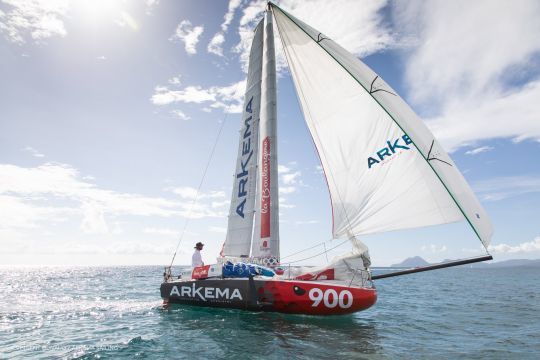
Could we soon be sailing on pleasure boats made from Elium?
Yacht builders like Brunswick are interested in this technology. This will boost its development. We validated this principle at Lalou Multi. We used it in the construction of our boats. We proved its feasibility and lifted a number of technical barriers. It's a technology that's beginning to mature and move on to the next stage. Some French shipyards are interested, and discussions are underway.
Eventually, if the consumer is prepared to pay the difference in cost, yes, this is the future. We'll start with prototyping, not large-scale production runs. That may be the case in 5 to 10 years' time. We'll start using this type of resin in most of the boats we produce. Attitudes are changing, and so are technologies. Resin is becoming easier to use, and teams will be trained to use it.
It's a topical issue to manufacture products that are virtuous and recyclable. We need to minimize our impact on the environment. It takes time for mentalities to evolve.
What are the obstacles to the use of thermoplastics in yachting?
Team training. This type of material is not used like polyester. It requires special techniques. You also need special tooling, molds and a cutting system to meet precise specifications.
As for pricing, Elium resin is more expensive than polyester, but less than epoxy.
And what about its development in ocean racing?
The other skippers are waiting to see if our boats can stand up to the test, to see if we can prove that our technology works before using it. For IMOCA boats, we can't use Elium resin, because they're built with epoxy pre-impregnated and we don't have Elium pre-impregnated. It's a technology that essentially uses infusion, with a heavier resin weight, so it's not mechanically interesting for the IMOCA class.
On the other hand, Class40s and Minis use the infusion construction method. But it's not yet a mature technology. On a pleasure boat, the safety gauge is very important. Monolithic hulls are 10/15 cm thick. The inertia of the material will ensure that the Elium resin is solid.
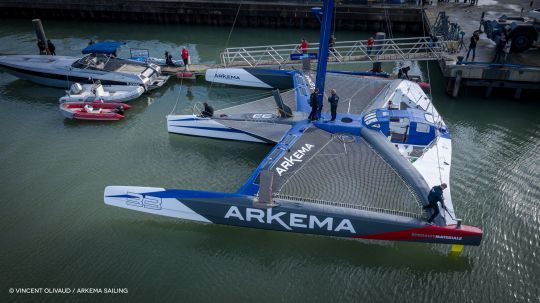
When we're looking for performance, the skin is very thin, so the resin (matrix) is under stress. It's the matrix that's going to provide the impact resistance. It's a risk skippers aren't prepared to take just yet.
At the same time, we're building a 2nd Class40 in epoxy (editor's note: Yoann Richomme's Class40 Paprec Arkea) and we're going to study the differences with the one built using Elium. The technology is the same, as is the team, but the material is different. We're carrying out a carbon balance in 3 scopes:
- From oil production to the workshop
- From materials to boat launch
- Boat operation and end-of-life
We can see that with the Class40 at the Elium, we save 50% of the carbon footprint on construction. We can see the real carbon impact of a thermoset boat.
I'll also be building another thermoplastic Class40, with which I'll take part in The Race Alone (the Class40 round-the-world stage race in 2023). I'm looking for funding for this project.
